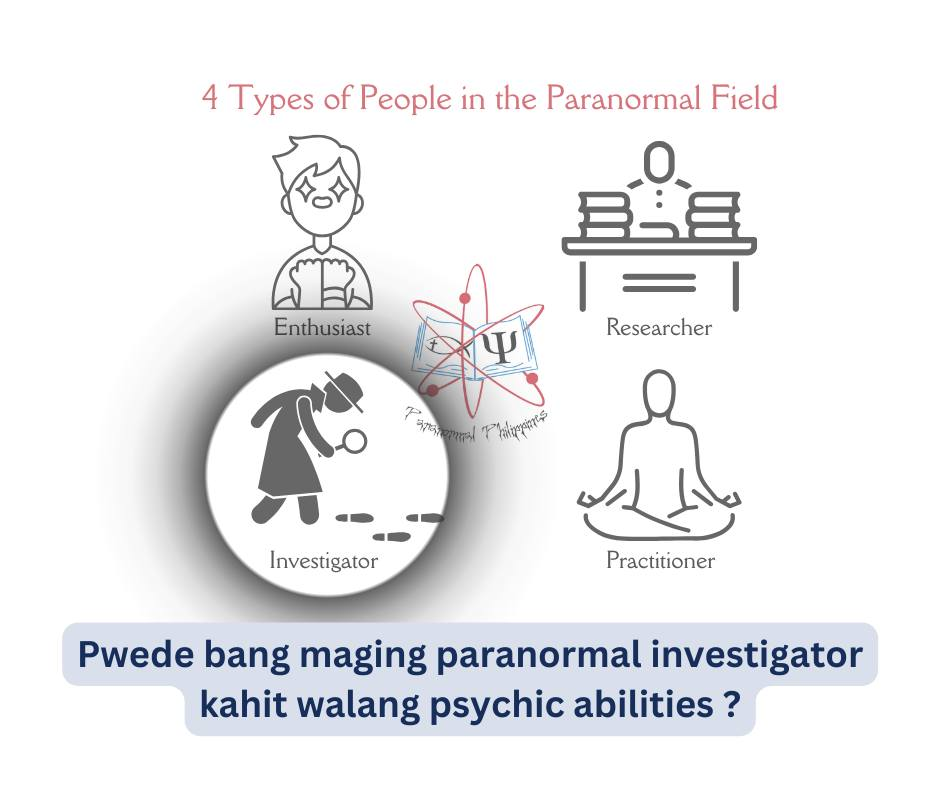 🏠
🏠 |
🧭 |

Most people investigating the paranormal rely on just one or two ways of thinking — usually scientific or spiritual — without realizing there are many other lenses for exploring these mysteries.
But truth is like a mountain seen from different sides. Relying on only one method can trap us in blind spots — making us ignore what doesn’t “fit” or dismissing important insights too quickly.
If we really want to understand strange phenomena — or even reality itself — we need a toolkit that includes multiple approaches, each with its strengths and weaknesses.
Here’s a quick guide to some (not all) of the major paradigms and what each one brings to the search for truth. Whether you're a researcher, seeker, skeptic, or experiencer, knowing these can help you become more open-minded, rigorous, and wise in your investigations.
Created by Echo, my ChatGPT (that's the E in C.E. hehe - Chris)
1. Scientific Method (Empirical-Centered)
Key idea: Test hypotheses through observation, measurement, and repeatable experiments.
Origin: Rooted in the works of Galileo, Francis Bacon, and later formalized by thinkers like Karl Popper and the logical positivists.
Method:
- Formulate a clear, testable hypothesis.
- Design controlled experiments to test the hypothesis.
- Collect data through repeatable, objective means (often using instruments).
- Analyze data statistically to draw conclusions.
- Peer-review and replicate findings to strengthen validity.
Used by: Mainstream science, laboratory parapsychology (e.g. Rhine Research Center), psychical research, skeptics, and critical thinkers.
Limitation: Filters out subjective and anomalous data that can’t be reliably reproduced or measured with current tools. May ignore the meaning behind an experience if it cannot be quantified.
2. Phenomenological Approach (Experience-Centered)
Key idea: Study the experience itself, not whether it’s “objectively real.”
I was collecting books from Father Bu and found this one in Shopee
Ms. Stargazer says, “Before ruling something to be paranormal, all scientific explanations should first be exhausted.” This is a principle we at Paranormal Philippines fully support.
I really love this: "The unknown is not to be feared, but to be learned and understood so that we can live in harmony with the universe." So inspiring! Ms. Star's statement made me realize that by understanding the unknown more, we could actually adapt to it instead of misunderstanding or fearing it all the time.
Method:
- Interview people in-depth about their experiences.
- Analyze patterns, symbolism, emotional and cognitive impact.
- Focus on subjective truth and its transformative effects, not external proof.
Used by: Transpersonal psychology, some European parapsychologists, spiritual traditions.
Limitation: Doesn't claim physical proof—only meaning and structure of inner experience.
3. Spiritual-Esoteric Approach
Key idea: The paranormal is part of hidden laws of consciousness or the cosmos.
Method:
- Use meditation, dreams, trance, psychic training, or ritual to access higher dimensions.
- Investigators are participants, not observers—development of the inner self is part of the method.
Used by: Theosophy, Anthroposophy (Rudolf Steiner), Western mystery schools, Yogic traditions.
Limitation: Knowledge is often not reproducible or shareable in the way science demands.
4. Anomalistics / Fortean Approach
Key idea: Catalog and compare weird stuff, regardless of whether it's explainable or not.
Method:
- Keep detailed records of high-strangeness.
- Compare cases across cultures and eras (cross-referencing ghosts, UFOs, cryptids, psychic events).
- Look for patterns, archetypes, overlaps.
Used by: Charles Fort (the word Fortean was derived from his name), John Keel (author of the Mothman Prophecies and other books), Jacques Vallée (developed Project Capella, a UAP data warehouse containing 11 databases of 260,000 cases from countries around the world), and Albert Rosales (who compiled 10K pages of Humanoid Encounters from 4780 BC to 2014)
Belief: These phenomena may be interrelated or reflect a deeper unknown principle.
Limitation: Often avoids firm conclusions; emphasizes mystery over explanation.
5. Participatory Epistemology (Jungian / Depth Psychology)
Key idea: The unconscious and archetypal forces shape what we experience as paranormal.
Method:
- Explore dreams, synchronicities, and symbols.
- See apparitions or hauntings as projections or encounters with the unconscious.
- Study how the psyche participates in shaping "reality.”
Used by: Carl Jung, James Hillman, Jungian therapists, some modern mystics.
Limitation: Hard to verify externally; blends psychology and metaphysics.
6. Relational Realism / Indigenous Methods
Key idea: The paranormal exists in relationship between observer, place, spirit, and story.
Method:
- Dialogue with the land, ancestors, or spirits.
- Storytelling, dream-sharing, and rituals are part of knowledge.
- Truth is emergent, not fixed—it depends on maintaining harmony or alignment.
Screenshot from this video
Used by: Indigenous cultures (e.g., Native American, Filipino shamanic traditions, Aboriginal). Also, after reading what he writes on his blog and talks about on his YouTube channel, I think Mr. Carl Lorenz Cervantes uses this paradigm.
Limitation: Often misunderstood or dismissed by outsiders as “unscientific,” but holds deep coherence within the culture.
7. Instrumentalist-Engineer Approach
Key idea: Build tech to detect or interact with the unknown (without waiting for consensus science).
Method:
- Use tools like EMF meters, EVP recorders, ghost boxes, psychic apps, etc.
- Tune instruments based on results, not theory.
- Some claim interaction with intelligent entities via technology.
Used by: Ghost hunters, ITC (Instrumental Transcommunication) researchers.
Approach | Seeks | Strength | Weakness |
Scientific | Objective proof | Reproducibility, falsifiability | May miss subjective or cultural truths |
Phenomenological | Meaning of experience | Deep insight into human experience | No external verification |
Spiritual/Esoteric | Higher knowledge | Inner development | Not externally testable |
Fortean | Pattern recognition | Broad perspective | Avoids conclusions |
Jungian | Psyche-spirit interaction | Depth psychology | Hard to separate inner/outer |
Indigenous | Harmony & relationship | Integrates community & cosmos | Not translatable to Western frameworks |
Instrumentalist | Data via tech | Practical exploration | Tools often unvalidated |
Each method is a path up one side of the mountain of truth; only by exploring all sides can we grasp the mountain's true shape.
 🏠 |
🧭 |
🏠 |
🧭 |












Comments
Post a Comment